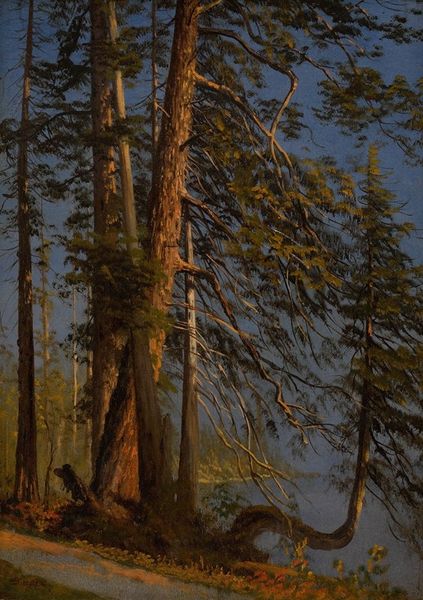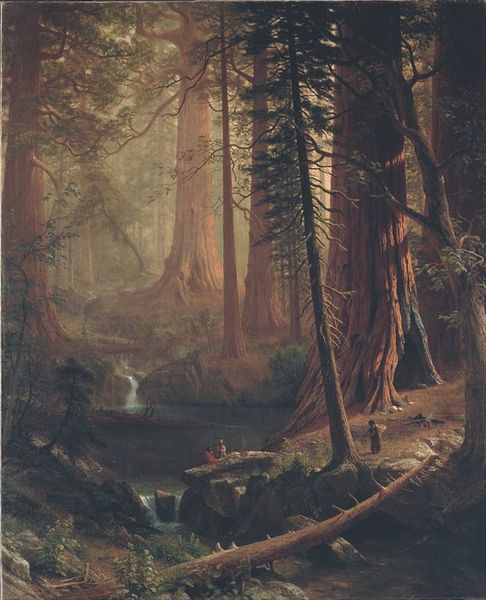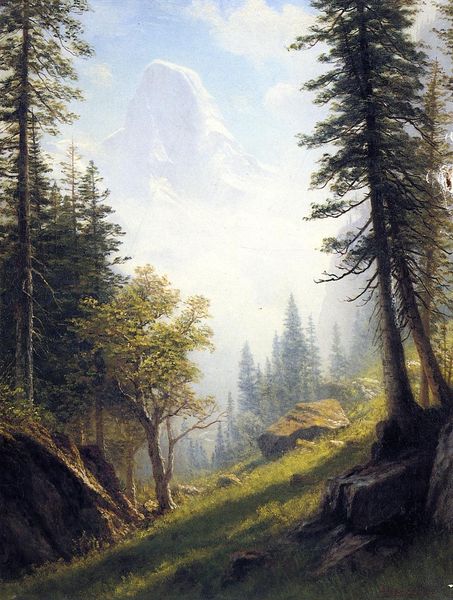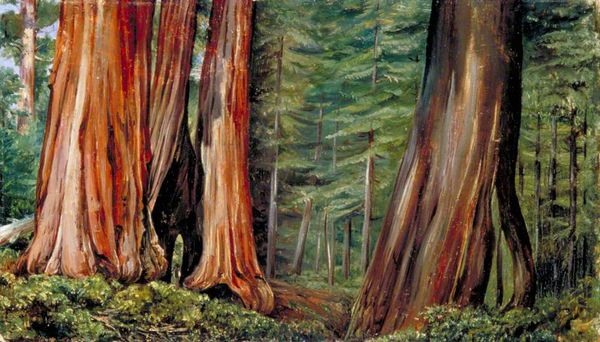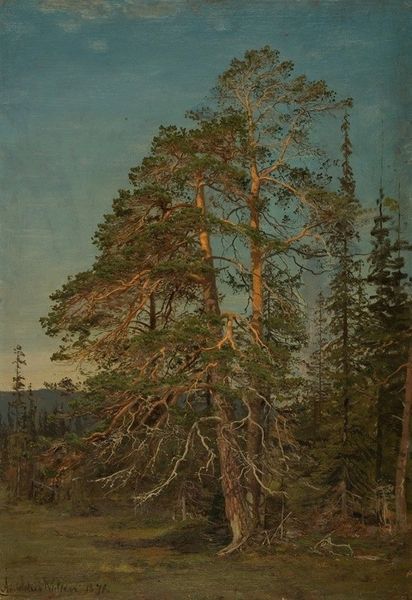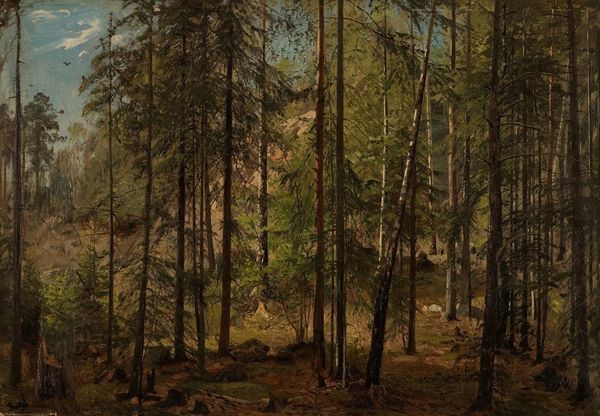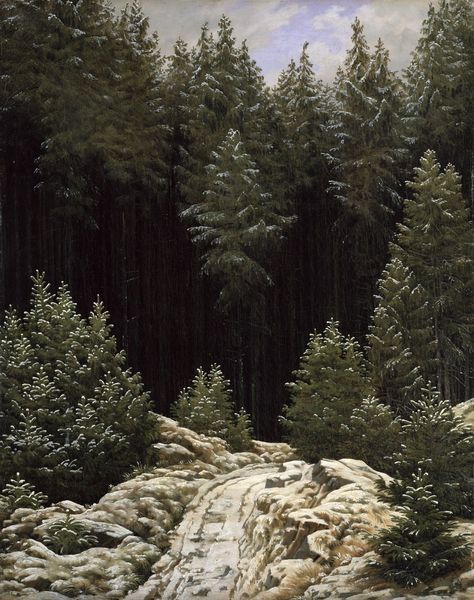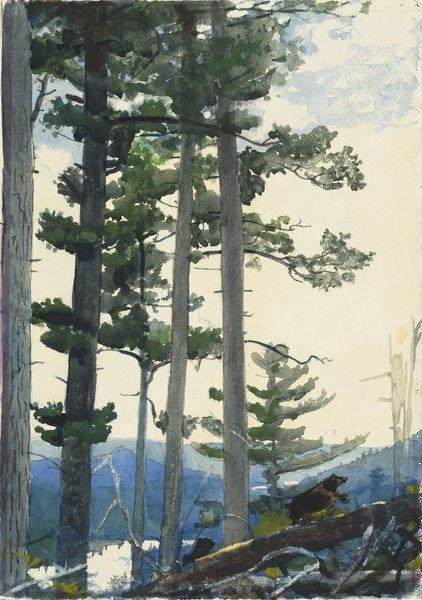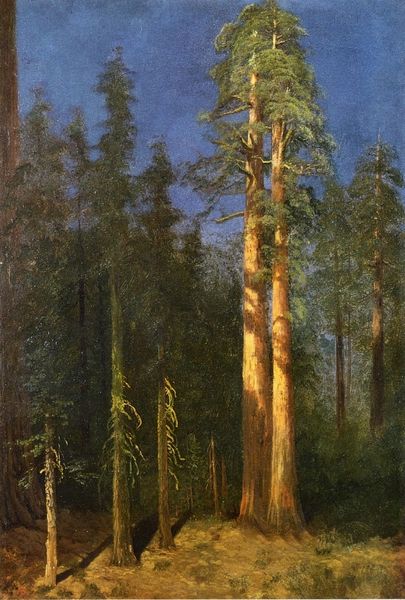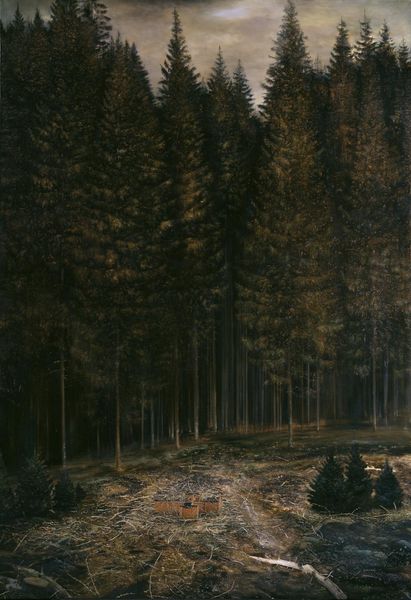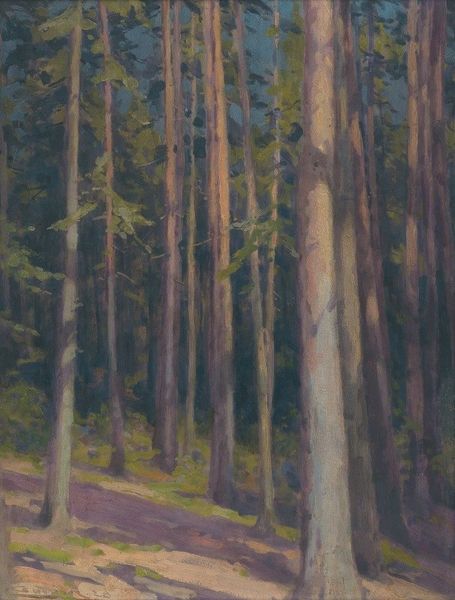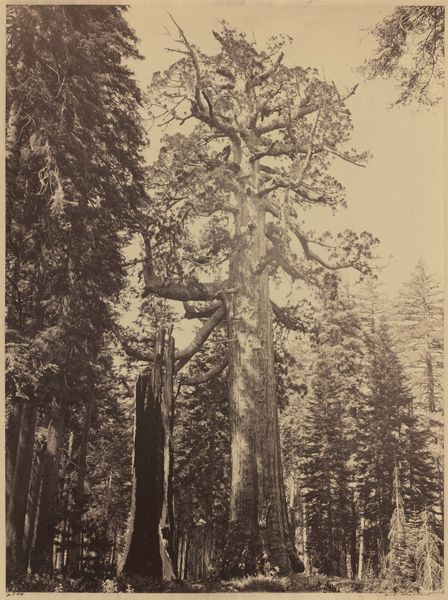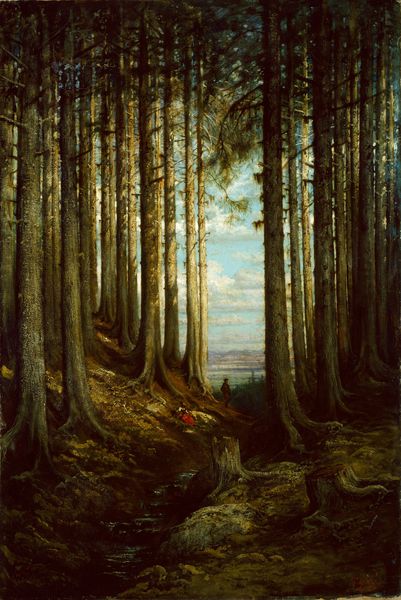
Copyright: Public Domain: Artvee
Curator: Albert Bierstadt’s "The Grizzly Giant Sequoia, Mariposa Grove, California," made circa 1872-1873, really captures a certain mood, doesn't it? Editor: It does—a grand one. I immediately notice the scale, not just of the trees themselves, but the way Bierstadt emphasizes their monumentality through light and shadow. The materiality of the painting itself – the oil paint laid thick in some areas, thin in others - amplifies that effect. Curator: Absolutely. Consider that this was painted not long after the Civil War, amidst anxieties about national identity and westward expansion. Landscapes like this become incredibly powerful statements about American exceptionalism and the sublime, almost divinely ordained, right? Editor: I agree it participates in that narrative, but also want to highlight what’s being left out of the frame. These giant trees are raw material – a commodity subject to timber harvesting, implicating the painting within a broader economic system of extraction and labor. Curator: That's crucial. Beyond that, it engages with manifest destiny; Bierstadt's idealized depiction ignores Indigenous histories and the violent displacement intertwined with the nation’s territorial ambitions and evolving self-perception. It’s a visual language of claiming space. Editor: Right, we can see how the smooth, seemingly untouched surfaces conceal both the cost of its production, with paints, brushes, labor, as well as that exploitation of natural resources and Native populations required to even arrive to this location for an afternoon of open-air work. It all comes together. Curator: For sure. Examining this painting reveals layers of historical narrative, intersecting with our understanding of American identity, gendered and racialized power structures, and artistic expression in the late 19th century. Editor: And for me, viewing it reminds us that artworks aren't just aesthetic objects but sites of social and material production that actively engage and reinforce, or potentially disrupt existing systems of power. I keep wanting to see this landscape from the perspective of someone wielding an axe, rather than a paintbrush. Curator: Looking closer allows the possibility of reassessing historical interpretations. I’ve shifted my views; I hadn’t considered resource extraction quite so much. Editor: Indeed, thinking about its making brings it to life.
Comments
No comments
Be the first to comment and join the conversation on the ultimate creative platform.
